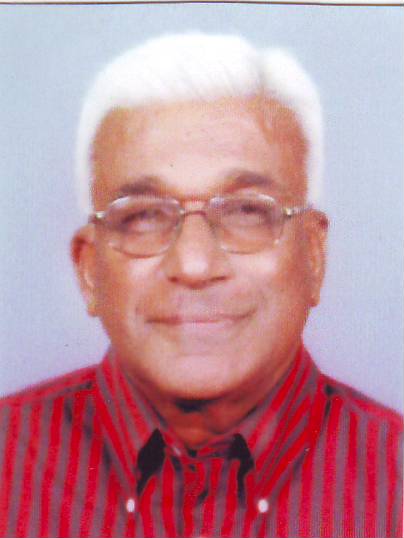Ira Handa Yata
- K S Sivakumaran -

 Balanced view of love amid hatred:
With background of the recently ended disasters of immense
proportions in terms of life and property, a number of movies
had been made in both Sinhala at national level and Tamil at
regional level both here and abroad.
My confession is that I have not seen the films made in Tamil
except one by Indian Tamil filmmaker Mani Rathnam.
Understandably most films had a stance of its own in
interpreting the agony of the people involved in the
confrontation for obvious reasons.
Even the latest in the genre- Under the Sun and Moon (Ira Handa
Yata)- by one of the internationally known Lankan filmmakers of
recent times Bennett Rathnayake is no exception as he has his
own interpretation of exploring love amidst hatred and feelings,
animosity and inhumanness among sections of two ethnic groups in
the name of war.
Balanced view of love amid hatred:
With background of the recently ended disasters of immense
proportions in terms of life and property, a number of movies
had been made in both Sinhala at national level and Tamil at
regional level both here and abroad.
My confession is that I have not seen the films made in Tamil
except one by Indian Tamil filmmaker Mani Rathnam.
Understandably most films had a stance of its own in
interpreting the agony of the people involved in the
confrontation for obvious reasons.
Even the latest in the genre- Under the Sun and Moon (Ira Handa
Yata)- by one of the internationally known Lankan filmmakers of
recent times Bennett Rathnayake is no exception as he has his
own interpretation of exploring love amidst hatred and feelings,
animosity and inhumanness among sections of two ethnic groups in
the name of war.
However I do not wish to go into the history of terrorism or an
analysis of the film except to point out the scenes where the
balance occurs in the film and a few observations of appreciable
scenes or sequences in the film.
Readers should see this film first and then agree or disagree
with my views. Without narrating the story, I shall go straight
to what I want to say.

Rakitha – the link between the two ethnic groups
The balances I find in this film are:
* Some Sinhala characters speak a few words in Tamil and vice
versa for communication.
* The Tigress commander (Kaushlya Fernando) is sympathetic
towards the victims and even argues against the ruthless male
Tiger.
* The male tiger (Bimal Jayakody) shows respect to his
counterpart in the enemy camp (Saumaya Liyanagae) and tries to
win him over to his side, but failing in his friendly persuasion
kills his enemy ruthlessly.
* The Major (Saumya) though refuses the offer to join the Tigers
because of his patriotism has a soft heart to even prevent a
inhuman killing the parents (Nadarahasivam and Veena Jayakody)
of a Tiger cadre who throws a bomb killing a few soldiers.
* Despite his love and commitment to his country, the Major
loves Kiruba (Tasha Darshani), the sister of the Tiger cadre.
* Parentless Kiruba Devi too reciprocates her love towards the
Sinhala Major thus indicating that not all Tamils were Tigers
biased and love is not mere chemical reaction but also deep
rooted humanness shedding off ethnic labels.
* Out of the unison of two lovers a child was born, but the
child is subject epilepsy due to the harassment of Tamil
children accusing her as the daughter of a traitor (her mother
marrying a Sinhala man)

Saumya and Tasha in a
scene from Ira Handa Yata
* The mother of the Major (Suweenitha Weerasinghe),
understandably out of deep sorrow of losing her dear son,
becomes so bitter as to blame her daughter-in-law as the evil
omen who brought all the unhappiness to her family.
* The Major’s sister Sachitra (Chandani Seneviratne) sees her
mother’s plight but is also sane enough to stress that the
country belongs to the Tamils as well as the Sinhala people.
* The atrocities of the Tigers even in their own community is
echoed by villagers in the Sinhala region condemning the Tigers
for the villagers predicament
* Except for one sequence where an army officer kills the
innocent parents of a Tiger cadre, no army excesses were shown.
* The northern atmosphere where the IDPs were, Red Cross
officials, the shootings, the A9 Road transportation, the
suicide bomber ,the attack on an army contingent, the barbed
wire dungeon where victims are treated, the torching scenes are
some of the scenes that were counterpoints suggesting a balance.
Now we come to appreciable aspects in the film. Udara
Rathnayake, a newcomer to film acting, I believe, portrays his
role as a gentleman soldier in an unaffected manner. I loved his
character and the way he carried it off.
Despite his injuries, he helps the almost dying superior
(Saumya) to survive. He serves as a link between the two
communities despite had been harassed by the Tigers.
I do not know whether Tasha Darshani is a Tamil girl or a
Sinhala girl portraying the role of a Tamil girl. She appeared
as an average Tamil girl with all the customs and behavioural
patterns. I liked her acting. It was very pleasing. All the
other actors (the director himself acting as a doctor) did their
roles adequately.
The photography of Kalinga Deshapriya, the music of Rohana
Weerasinghe, the story, screenplay and direction (all by Bennett
Rathnayake) and other elements in filmmaking makes this film
meant for both people with refined tastes locally and artistic
admirers of the international scene. Congratulations Bennett
Rathnayake!
sivakumaran.ks@gmail.com

